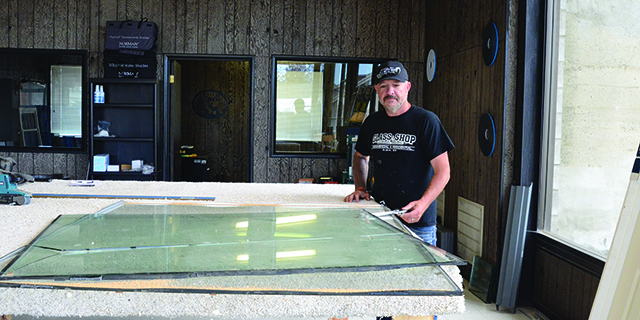COVID-19 vaccines: Advice to a friend
Published 6:00 am Wednesday, January 13, 2021

- Polk
A good friend (called “Tess”) is a part-time summer resident and homeowner in Wallowa County. She is 79 years old and has significant rheumatoid arthritis treated with disease-modifying antirheumatic drugs.
On Jan. 1, I emailed Tess the report of an anaphylactic reaction to COVID-19 vaccine in a health care worker at Wallowa Memorial Hospital. She responded: “Because I have a history of allergies, it has made me a bit reluctant to get the vaccine, which is really unusual for a retired public health nurse! For me the underlying concern is how quickly these vaccines were put on the market. So I’m still thinking about it.” (Tess has approved revealing her health information and our conversation.)
Trending
Tess’ concerns are valid. She should discuss them with her medical care provider who is in the best position to assess her past and current medical history versus risks and benefits of the vaccine.
The purpose here is to review recent information regarding her concerns with the hope that it will help Tess — and others with similar concerns — make an informed decision.
As Tess observed, vaccines for COVID-19 were “quickly … put on the market.” We have all heard how it takes years of research to develop a vaccine. There is a natural inclination to believe COVID-19 vaccine research must have cut corners to have received FDA Emergency Use Authorization (EUA) so quickly.
But there is an alternative explanation. Vaccine science had been moving at “warp speed” before anyone heard of COVID-19, and a framework for rapid vaccine development was already in place when the pandemic began in late December 2019. Dr. Anthony Fauci has said, “The speed (of the EUA) is a reflection of years of work that went before. That’s what the public has to understand.”
Chinese and Australian virologists posted the genetic sequence of SARS-CoV-2 virus on Jan. 10, 2020. This was quickly noticed by scientists at the University of Pennsylvania who collaborated with two biotech companies, Moderna (USA) and BioNTech (Germany) to identify the genetic code segment that determined synthesis of the spike protein characteristic of coronavirus. Furthermore, they had already developed a lipid delivery system protecting messenger RNA (mRNA) from rapid breakdown when injected. The mRNA directs production of spike protein, resulting in immunity to SARS-CoV-2.
The U.S. government pumped over $12 billion into vaccine research and purchases through Operation Warp Speed. Additional funds came from collaborations with private industry (Pfizer) for BioNTech and the National Institutes of Allergy and Infectious Diseases for Moderna. The first doses were given to human volunteers in March and in late July both vaccines entered the final phase of clinical trials. In November, both vaccines were reported 95% effective in preventing COVID-19 infection; in mid-December, both vaccines received an EUA. The New England Journal of Medicine published both studies in late December, one year following the first cases. (A user-friendly summary of the BioNTech-Pfizer study can be downloaded: www.nejm.org/doi/suppl/10.1056/NEJMoa2034577/suppl_file/nejmoa2034577_research-summary.pdf)
Trending
If 2020 is noteworthy for the COVID-19 epidemic, equal attention should go to the scientists who made vaccines of astonishing effectiveness possible in the same year.
Tess’ concern was also vaccine safety given that she has “a history of allergies.” All drugs have adverse effects; it is the benefit to risk analysis that is important. On Jan. 3, the CDC reported a cumulative total of 349,246 COVID-associated deaths in the U.S. On Jan. 7 alone, there were 4,000 deaths. There have been no deaths or permanent injury following either vaccine. The benefits of vaccines that prevent 95% of infections versus risk is compelling.
What are the risks? Both vaccines cause injection site adverse effects (pain, local swelling, etc) and systemic effects (fever, muscle aches, etc.). Of greater concern are recent reports of severe adverse events shortly following administration, as occurred at Wallowa Memorial Hospital. On Jan. 6, the CDC reviewed the approximately 21 cases of severe reactions (including anaphylaxis) reported in the U.S. following an estimated 1.9 million doses of the Pfizer-BioNTech vaccine. (www.cdc.gov/mmwr/volumes/70/wr/mm7002e1.htm). The incidents of serious immediate reactions is approximately 1 per 100,000 recipients. Patients have been successfully treated with epinephrine and supportive care; so far there appear to be no permanent complications.
The cause of these serious reactions is unknown, making it difficult to identify those at risk. However, most recipients with immediate and severe reactions had a history of prior allergies, and one-third had a history of anaphylaxis. While these vaccine reactions are rare, they are potentially life-threatening; recipients should remain nearby for 15-30 minutes post-vaccination to ensure availability of medical care if necessary.
The bottom line? Tess and her medical care provider should discuss the benefits and potential risk of COVID-19 vaccines for Tess. The good news is that highly effective vaccines are available, and for nearly all recipients the risks are small. For some, the decision may be more complex. This evolving story will be covered in future columns.








